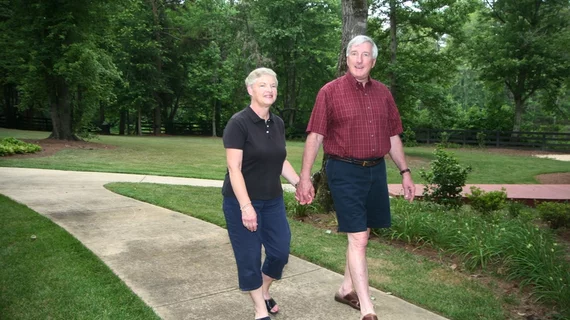A half-hour walk in the morning lowers blood pressure (BP) in overweight and obese men and women predisposed to heart disease, according to a study published in Hypertension Feb. 20.
The project was spearheaded by Michael Wheeler, BSc, a PhD candidate at the University of Western Australia in Perth, and aimed to determine whether exercise conducted in the morning has lasting BP benefits throughout the day. Past work has suggested some of the benefits of early exercise might be contradicted by long periods of sitting at work or at home.
“Traditionally, the health effects of exercise and sedentary behavior have been studied separately,” Wheeler said in a release. “We conducted this study because we wanted to know whether there is a combined effect of these behaviors on blood pressure.”
Wheeler and his team recruited 67 participants for their study, 35 of whom were women. Over the course of a couple of weeks, subjects were randomized to three different scenarios—sitting uninterrupted for eight hours; sitting for an hour prior to 30 minutes of exercise, followed by a 6.5-hour sitting break; or sitting for an hour prior to 30 minutes of exercise, followed by sitting that was interrupted every half-hour with three minutes of light walking for 6.5 hours. Scenarios were separated by at least six days.
The researchers conducted the study in a controlled lab environment, with participants eating the same standardized meals throughout the trial. Blood pressure and adrenaline levels were measured repeatedly.
The researchers found average blood pressure—specifically systolic BP—dropped among both men and women who exercised for half an hour in the morning when compared to those who didn’t. Women who took three-minute sitting breaks throughout the day saw the best results.
“Having the study participants begin with exercise was intentional,” Wheeler said. “We wanted to focus on the novel aspect of combining exercise with breaks in sitting. However, it means that we cannot say for sure that breaks in sitting alone had no blood pressure-lowering effect in men, as any effect could have been masked by the preceding effect of exercise.”
Wheeler et al. said they weren’t sure why there were such stark gender differences in their study, but it could have something to do with differing adrenaline levels and the fact that all women in the study were postmenopausal. Previous studies have found postmenopausal women are at a particularly increased risk for CVD.
Wheeler said further studies should examine whether younger people, or those who aren’t overweight, would experience the same BP benefits as the patients in this study.
“As the proportion of those who are overweight with higher blood pressure increases with age, adopting a strategy of combining exercise with breaks in sitting may be important to control and prevent the development of high blood pressure,” he said.

